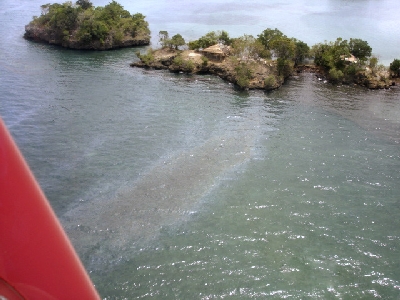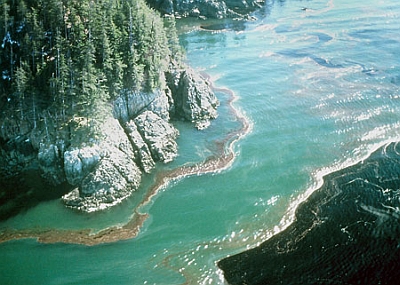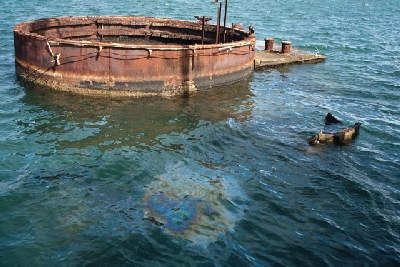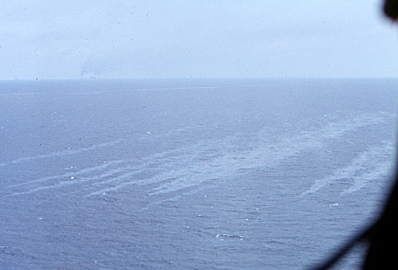2. Oil Pollution
Evolution of oil at sea
When oil is spilled at sea it undergoes a number of physical and chemical changes known as weathering. Oils weather in different ways. Some of the processes cause part of the oil to leave the sea surface, whilst others cause the oil that remains on the surface to become more persistent.
Find out which processes are responsible for the break up and dissipation of oil at sea in a chapter about oil weathering.
Directly after the spill, the fresh oil spreads out over the water surface, initially as a single slick. After a few hours, the slick will begin to break up and will then form narrow bands parallel to the wind direction (see photograph below).
After a few hours up to 1 day, single slick fragments and thicker patches are increasingly noticeable compared to the thin layers which have a rainbow, sheen or metallic appearance.

Photo: NOAA
With ongoing weathering processes, after a few days brick red patches of reversed emulsion (i.e. water-in-oil emulsion) may form that are surrounded by thinner layers of rainbow, sheen or metallic appearance

Photo: Erich Gundlach / EVOSTC
Subsequently, several days after the spill, the thinner films gradually disappear and eventually only patches or stripes of emulsion may remain, especially in a rough sea. Iridescences can however reappear later, even several weeks or months after the spillage, if the sea is very calm and the sun is warming up the spill.

In this case the iridescence is caused by small amounts of oil that are still being released from the ship wreck.
Photo: James G. Howes, November, 2005

